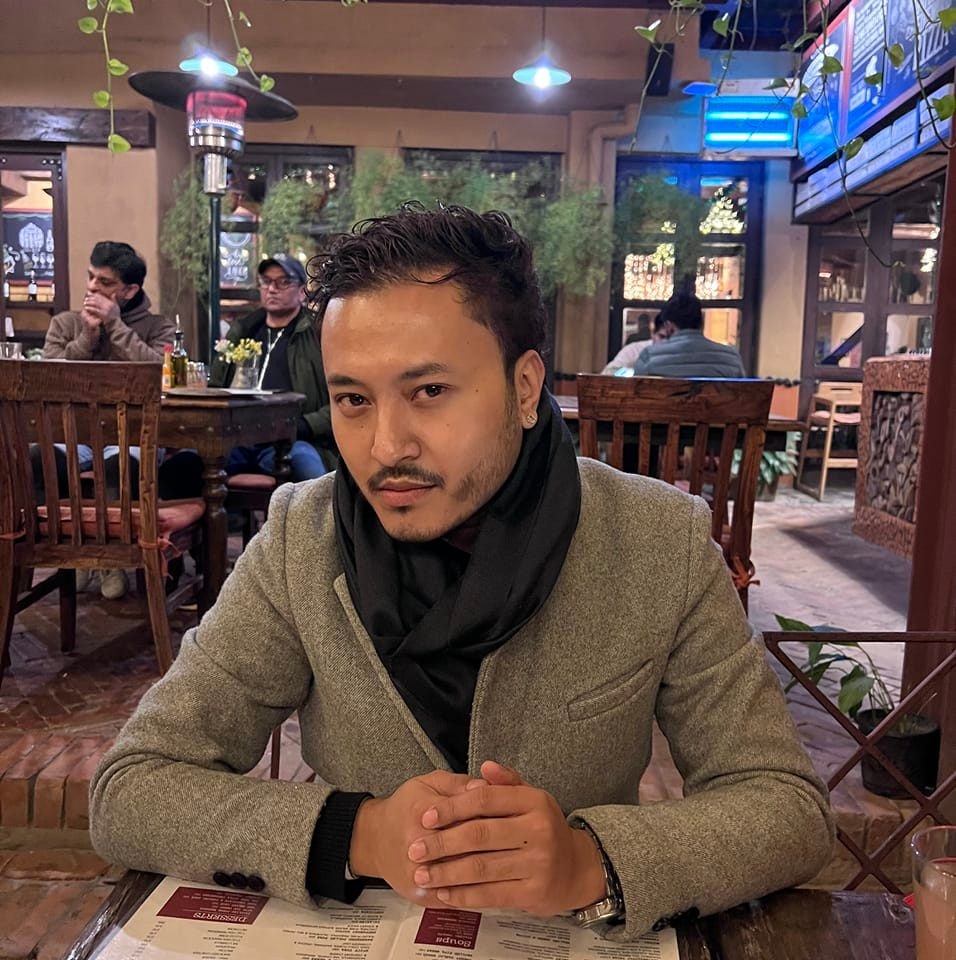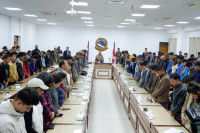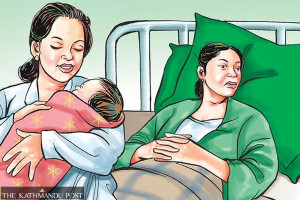Columns
Mental health care for LGBTQI+ community
We must create a safe environment for queer individuals to feel seen, heard and included.
Ayush Joshi
In South Asia, Nepal is often commended for its progressive LGBTQI+ rights. Yet, LGBTQI+ children and youth continue to struggle with severe mental health challenges—often in silence and often alone.
A recent joint study by Save the Children and Blue Diamond Society Nepal reveals the scale of this crisis. Among the 380 respondents from the LGBTQI+ community in Nepal, 42.7 percent of LGBTQI+ children and youth reported experiencing anxiety or depression. Further, there is a larger call to action, demanding that LGBTQI+ and their mental health should not only be viewed through a health lens, but that intentional efforts be made to understand the compounding impact of social, economic and political structures on LGBTQI+ individuals and their mental health.
Search for affirming care
During one of the focus group discussions, a participant from the LGBTQI+ community described seeking mental health support as “speed dating.” When probed, they elaborated: “It’s exhausting to keep repeating ourselves. When will we find someone who actually understands us?” This sentiment was echoed throughout the study.
LGBTQI+ individuals often feel more like educators than clients during counselling sessions. A participant shared how their mental health worsened because they had to spend time explaining basic LGBTQI+ concepts to their therapist, while paying for the session. Others described the added economic burden of therapy, which is neither accessible nor affordable for many. This further deepens the mental health gap between those who can pay and those who cannot. Over 55 percent of LGBTQI+ youth in Nepal cited economic constraints as a primary reason for not accessing mental health care.
The binary lens that many mental health practitioners adopt is outdated and harmful. It perpetuates stigma, reinforces exclusion and creates a trust deficit in the healthcare system. These structural failings push LGBTQI+ individuals toward harmful coping strategies like substance use or social withdrawal. Moreover, according to the research, more than two-thirds of LGBTQI+ youth in Nepal have never accessed formal mental health services due to stigma, discrimination, a lack of LGBTQI+ affirming providers and fear of breach of privacy and confidentiality.
Leave no one behind
There is a greater need to shift our narrative of the LGBTQI+ community as being monolithic, and instead acknowledge the diversity and intersectionality within the community. The report also provides evidence that lesbian and bisexual women, trans men and intersex individuals are even more marginalised due to societal prejudice and economic vulnerability as key stressors. Patriarchy and societal hegemony also dictate their lives, as patriarchal structures often limit their agency, choice and voice, derailing their mental health status.
Mental health practitioners often lack the awareness and training to address these nuanced, intersectional and lived experiences; services become exclusionary, ineffective and discriminatory. According to the research, 67.8 percent of LGBTQI+ youth have never accessed formal mental health services. Among those who seek help, many report breaches of confidentiality and a lack of trust in providers.
Similarly, in the absence of affirming care, many LGBTQI+ youth turn to informal networks, friends, chosen family and peers for support. While these relationships provide critical emotional safety, they should not be established as a substitute for professional mental health services.
Therefore, peer networks need to be strengthened by equipping them with basic psychosocial first aid skills and knowledge of referral pathways. However, this must complement, not replace, the role of trained, culturally competent mental health professionals.
Bridging the policy practice gap
The recent Supreme Court directive on revising national mental health policy is a welcome gesture. However, one must ensure that revisions to mental health policies are not binary. They should ensure intersectional frameworks that address the challenges faced by the LGBTQI+ community. There is also a need for programmes that focus on building the competence of mental health service providers, ensuring that they adopt a “do no harm” principle, and sensitising diversity in the client base.
Mental health seeking behaviour should be normalised, especially among the LGBTQI+ community, twinned with subsidised or free mental health care for those from low economic backgrounds. Sensitisation must go beyond theory, address unconscious biases, practice empathy and establish accountability mechanisms for malpractice and discrimination.
Lastly, there needs to be growing recognition of LGBTQI+ rights as human rights and child rights and mental health as non-negotiables. We need to promote mental health not as a luxury, but as a right that does not discriminate against individuals because of their diverse SOGIESC. The interviews with LGBTQI+ children and youth in Nepal make one thing clear: “healing the rainbow” is an investment that shifts norms and addresses biases towards the community. Our collective responsibility is to create a safe and supportive environment to help marginalised identities be seen, heard and included.
Joshi is the Director for Advocacy, Communications, Campaigns and Media at Save the Children Nepal and Bhutan.




 15.12°C Kathmandu
15.12°C Kathmandu















